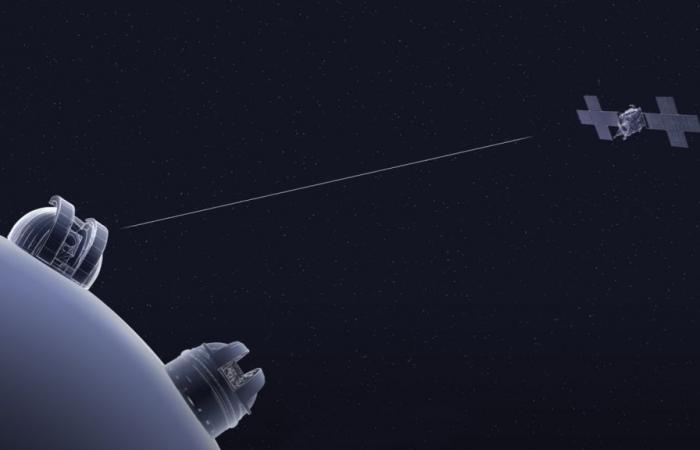Communications from Earth to space are starting to become difficult. In a world where space missions are increasing and on-board technologies are becoming more sophisticated, requiring more and more data to be sent, it is time to find other distribution systems to avoid any disruptions.
Place au laser
The National Aeronautics and Space Administration (NASA) is also facing this problem, and already has a solution being tested. The American space agency has in fact tried laser technology, having wave frequencies much higher than those of radio, via the Psyche mission.
Taking the name Deep Space Optical Communications (DSOC), the latter has just succeeded in sending data 290 million kilometers from Earth, a distance equivalent to the furthest that separates us from the red planet and Elon’s dream Musk, Mars.
“This step is important. Laser communication requires a very high level of precision and, before the launch of Psyche, we did not know what the performance degradation would be at our furthest distances,” explains Meera Srinivasan, DSOC operations manager.
Challenges and flow rates
She points out in passing that the tracking and pointing techniques have been verified, thus confirming that “optical communications can be a robust and transformative way to explore the solar system”.
It must be said that NASA’s laser technology has a big challenge: ensuring precise alignment between the antennas on the ground and the spacecraft for sending data over astronomical distances.
In addition to this reliability of the DSOC system, engineers tested transferable flow rates at different distances from Earth. We thus learn that the transmission is 267 megabits per second at 53 million kilometers away, the closest distance of Mars to Earth; or 6.25 megabits per second at 385 million kilometers.
And after?
For information, the first sending of data from the Psyche mission via laser technology was successful last year. The latter was then confirmed at the beginning of 2024, before being reaffirmed this fall.
The team in charge of the project has now chosen to deactivate DSOC. The objective here is to check whether the equipment will remain functional after a year in space. This will still be short-lived, given that we will reach this period of time next month.
“Once this milestone is achieved, we will be able to operate the transceiver to its full capabilities during the post-conjunction phase which begins later this year,” concludes Ken Andrews, flight operations manager for the DSOC project.






